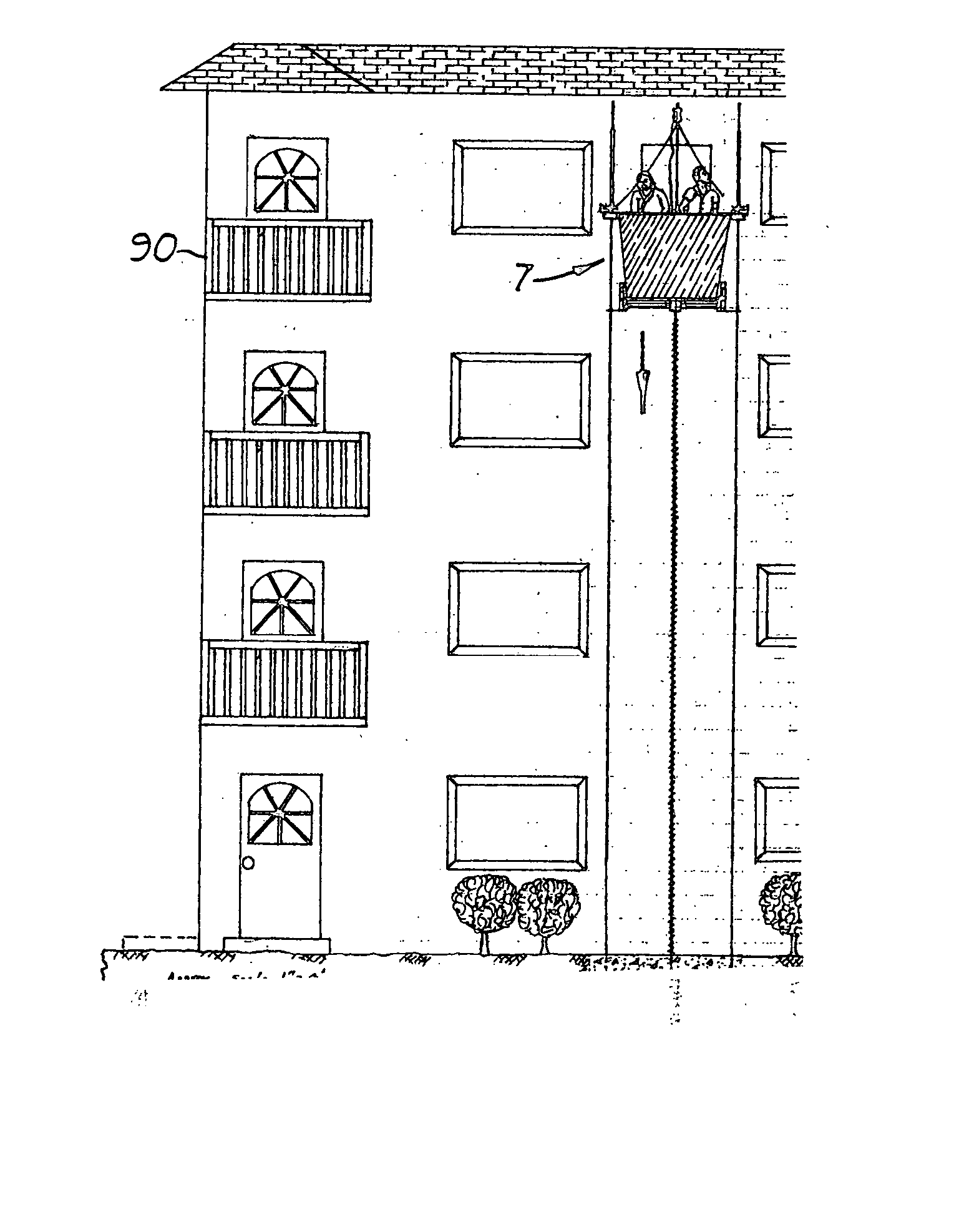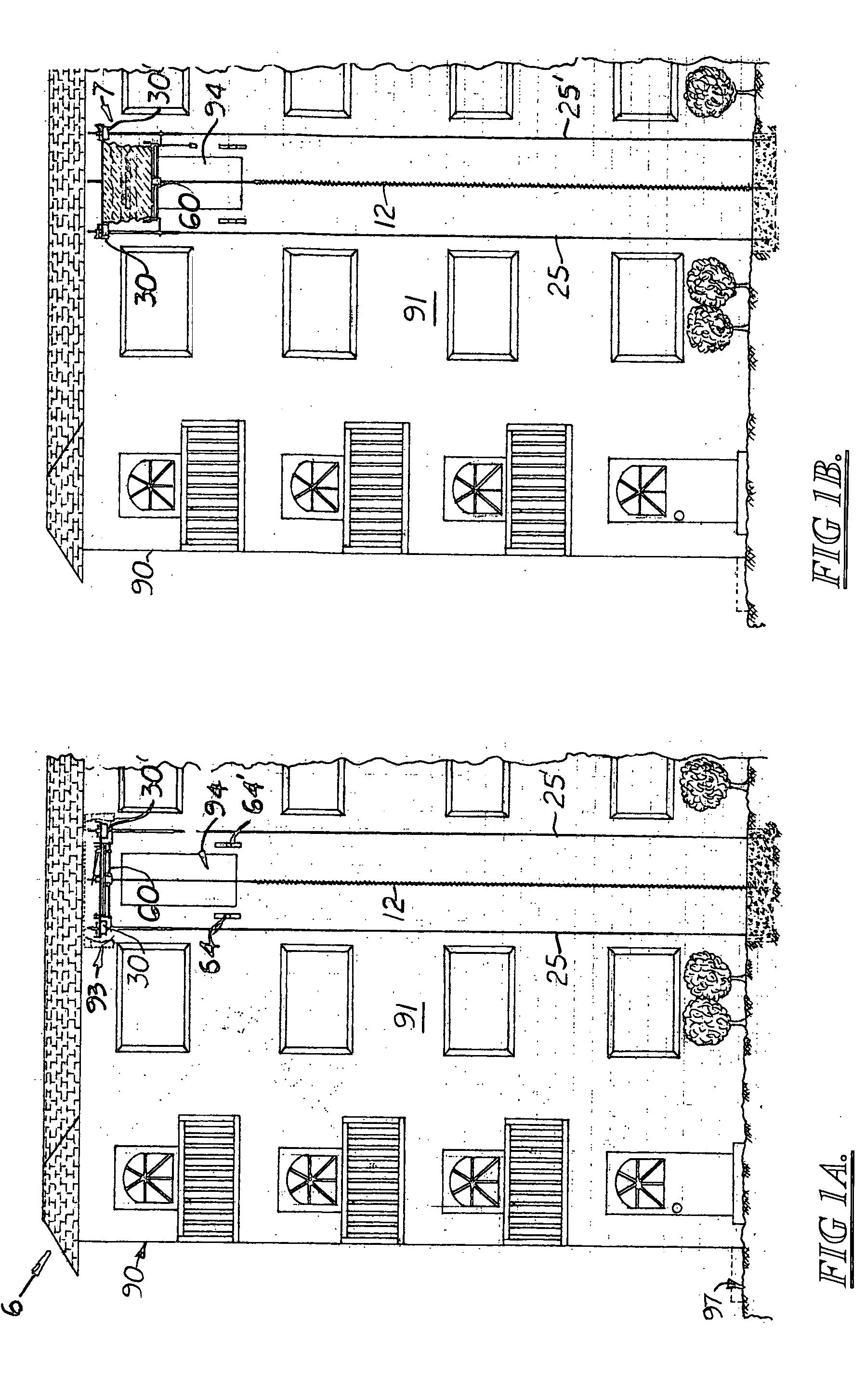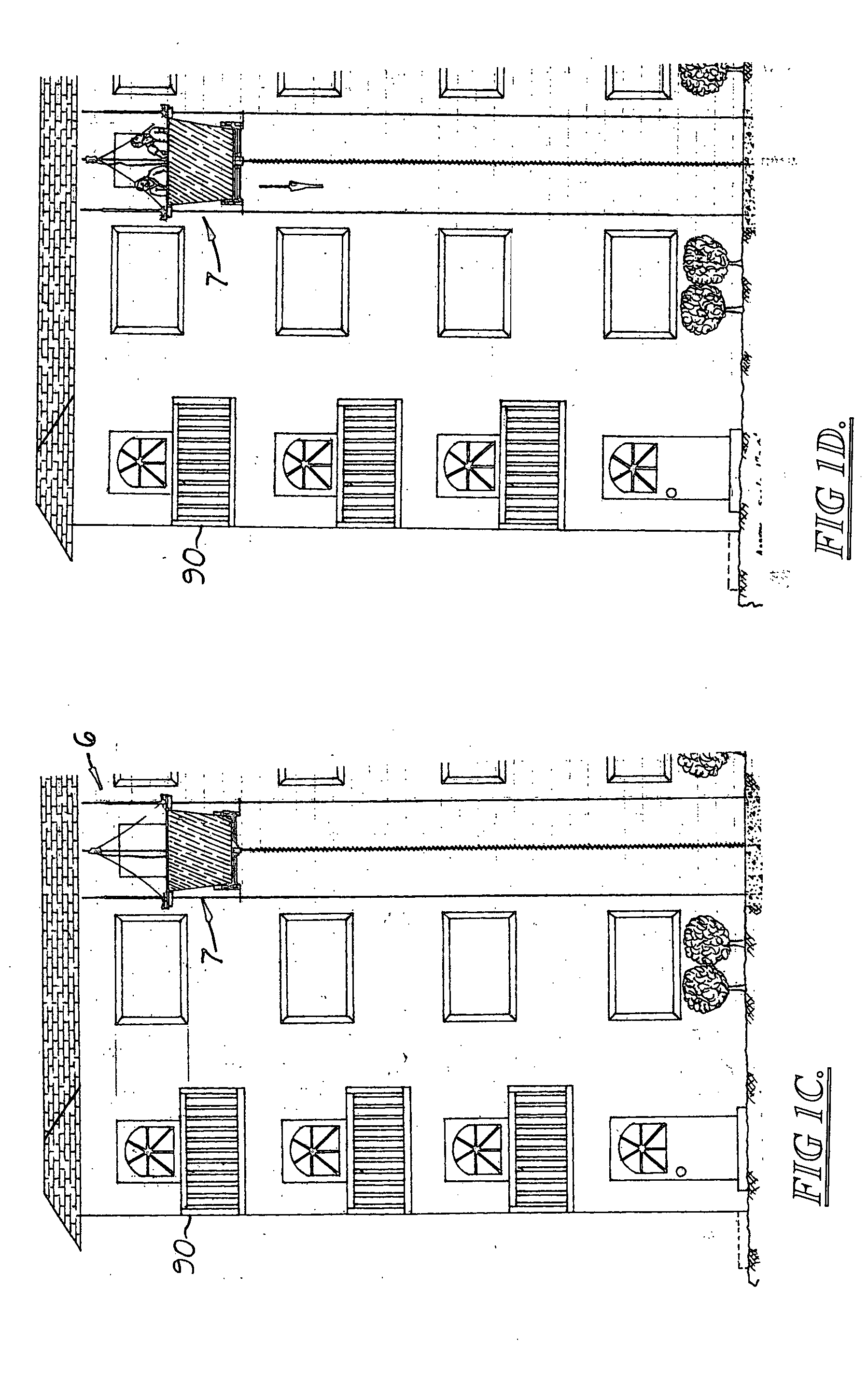Load lowering system
- Summary
- Abstract
- Description
- Claims
- Application Information
AI Technical Summary
Benefits of technology
Problems solved by technology
Method used
Image
Examples
Embodiment Construction
)
[0031] Shown in the 1A-1J is a system 6 for mechanically lowering a load from an elevated position, to a lower position in a relatively slow and controlled manner. The system 6, which is specifically designed not to require electricity, includes a load carrying carriage 7 that is initially stored in an elevated stored position 93 located above an escape opening 94 formed on the wall 91 of a building 90. When an emergency exists that requires a user located in the upper floor of a building 90 to quickly leave the building 90, an escape mechanism is activated which causes the carriage 7 to automatically descend from an elevated position 93 located on the wall 91 to the escape opening 94. The user then exits the building through the escape opening 94 and enters the carriage 7. The carriage 7 is then released from the escape opening 94, and slowly descends to the ground 97 where the user departs. The carriage 7 may then be returned to the escape opening 94 to pick up additional users o...
PUM
 Login to View More
Login to View More Abstract
Description
Claims
Application Information
 Login to View More
Login to View More - R&D
- Intellectual Property
- Life Sciences
- Materials
- Tech Scout
- Unparalleled Data Quality
- Higher Quality Content
- 60% Fewer Hallucinations
Browse by: Latest US Patents, China's latest patents, Technical Efficacy Thesaurus, Application Domain, Technology Topic, Popular Technical Reports.
© 2025 PatSnap. All rights reserved.Legal|Privacy policy|Modern Slavery Act Transparency Statement|Sitemap|About US| Contact US: help@patsnap.com



